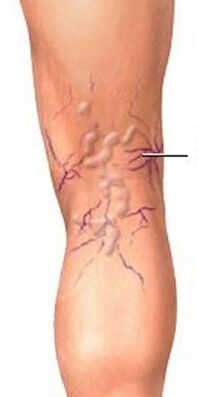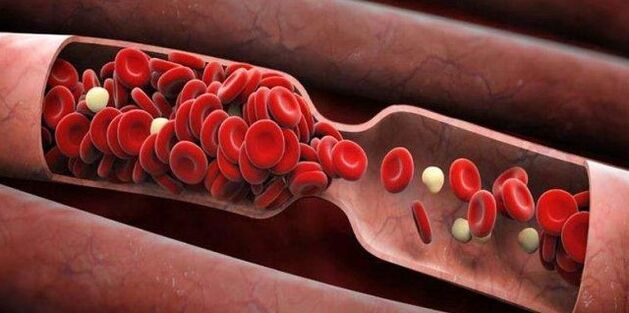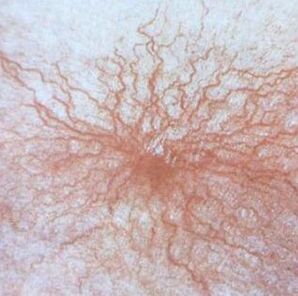Varicose veins are a pathological process that is characterized by an increase in the lumen of blood vessels, which provide a blood drainage, the thinning of your walls and the deformation to the formation of nodes and slides. For anatomical reasons, the disease can be found most frequently in the veins of the lower extremities.

The external signs of varicose veins are not an exceptionally aesthetic problem: vascular stars that highlight a dark shadow - only symptoms of blood circulation diseases that are affected with life -threatening consequences.
The mechanism of developing varicose veins on the legs
The mechanism of developing varicose veins is associated with a decrease in the functionality of the venous flaps. They are subject to large mechanical loads under the influence of genetic factors, hormonal jumps, inflammation in the tissues of the lower extremities and stress, weakness and prevent the opposite blood flow. Inflammation occurs against the background of stagnating phenomena, which are associated with high blood viscosity, hypodynamy or longer stay in a standing or seated position.
The pressure of the excessive blood volume on the walls of the veins deforms them and removes the functionality of the muscle and the nervous venous wall, which deliver their stable sound. The stagnation of blood, outstanding blood vessels and inflammation of their walls often lead to the formation of blood cells that overlap the lumen of the veins.
Varicose veins on the legs are therefore not a superficial problem that is associated with mechanical damage to the subcutaneous vessel or temporary phenomena, but deeper circulatory diseases that developed in the influence of risk factors in the patient's disease.
The disease of drug therapy is based on:
- Tighten the walls of blood vessels;
- Distance of inflammation;
- Liquefaction of blood;
- Prevention of blood clots.
In the absence of adequate treatment, what is dangerous for varicose veins of the lower extremities can become a reality for each of the patients with this disease.
In 80% of cases, women suffer from varicose veins on their legs. The main thing that is dangerous varicose veins in women is the likelihood of an early development of the disease due to hormonal jumps during puberty or pregnancy. During the storage of the fetus, only gentle therapy is possible that does not have the teratogenic effect. Additional leg load, lack of intensive treatment and stress In the case of experiments, the deterioration of the disease can stimulate.
What threatens varicose veins?
As a rule, thrombophlebitis and other dangerous consequences of varicose veins occur in the 3rd stage of venous insufficiency. Symptoms of the late stages of vascular failure:
- Constant heaviness in the legs;
- Swelling;
- The darkening of the skin in the area of the ankle.

Dermatitis, eczema and dermatitis lead to violation of blood circulation in the limbs.
Telengiektasie is the least dangerous consequence of venous insufficiency. The disease is characterized by the occurrence of vascular networks and "stars", which are accompanied by edema, tiredness of the legs, the regular occurrence of a feeling of numbness and night attacks in caviar. The aesthetic defect is one of the reasons why women often turn to the phlebologist in the early stages of varicose veins. The patients take care of their health to save their legs nicely.
Subcutaneous and vein gaps
Thrombophlebitis - thrombosis against the background of the inflammation of the venous wall and the blood stagnation in an expanded container. The developed disease is characterized by the compression and pain of the palpation (testing) of the affected vessel and by redness of the skin around the thrombus. Thrombophlebitis develops about 25% of patients who have diagnosed varicose veins. Blood clots that are in the surface veins have a low separation of separation with health. However, immediate hospitalization is required when promoting a blood clot along a subcutaneous or perforated vessel.
Deep thrombosis is much more dangerous than varicose veins and thrombophlebitis. In deep vessels of the lower extremities, the lung artery can be separated and clogged, which leads to death. The characteristic symptoms of deep venous thrombosis are a serious edema of the limb that occurs in a short time, and a sharp painful pain in the veal or thigh muscle. The spread of the pathological process to deep vessels of the lower extremities can be observed in the later stages of varicose veins.
A trophic ulcer is a deep dermal defect that forms in the later stages due to an impaired blood flow in the surface layers of the skin. It represents a long painful wound that is difficult to give in to the therapy.
The varicose of the veins of the lower extremities is one of the risk factors for the development of such a pathology in other vessels of the small pelvis of men and women.
Medical measures against the consequences of varicose veins
The treatment of complications of varicose veins on the legs usually begins with drug therapy for the primary disease.
In order to reduce the deformation of blood vessels that extend due to a decrease in sound, venotonic base of hesperidine, diosmine, esculin, etc. are prescribed.

With inflammation of the venous walls, medication from the group of non -steroidal anti -inflammatory drugs in the form of tablets and gels are prescribed. The oral reception of anti -inflammatory drugs is recommended for thrombophlebitis.
A decrease in blood viscosity is achieved using the local use of ointments with anticoagulans components and oral intake of routine and methylxanthin derivatives that have anti -gravantami properties.
The surface manifestations of varicose veins on the legs (including telangiectasia) are eliminated by sclerotherapy (glue the walls of the affected vessel with a special medicine). The procedure does not harm significant health and does not violate blood flow because during rehabilitation the function of the surface veins exceeds profound vessels.
With deep venous thrombosis, the bed rest is prescribed, the intravenous administration of anticoagulants and anti -cargans under the control of blood viscosity. Surgical treatment for deep vascular thrombosis and thrombophlebitis (including large subcutaneous veins) is indicated if there is a high risk of blocking the lung artery. The treatment of trophic ulcers aims to stimulate the healing of the wound and the therapy of the primary disease.
Preventive measures
The prevention of seizures includes the following measures:
- Wear of compression lines;
- Physiotherapy sports lessons;
- Exclusion of a long session and stand;
- The choice of shoes with a heel is between 2, 5 and 6 cm;
- Enrichment of nutrition with fiber and sources of vitamins B1, C, E and P;
- Compliance with the water form (2, 5 l);
- contrasting water processes;
- Replacement of hormonal contraceptives (the effect of KOC on the female body includes increasing thrombosis);
- Folk methods (compression, baths, etc. ).
Early diagnosis of varicose veins, timely adequate treatment and a decrease in the effect of risk factors prevents the development of complications from the disease. In some cases, the use of minimally invasive surgical methods not only eliminates not only aesthetic problems, but also the likelihood of deterioration in the pathological process.




















